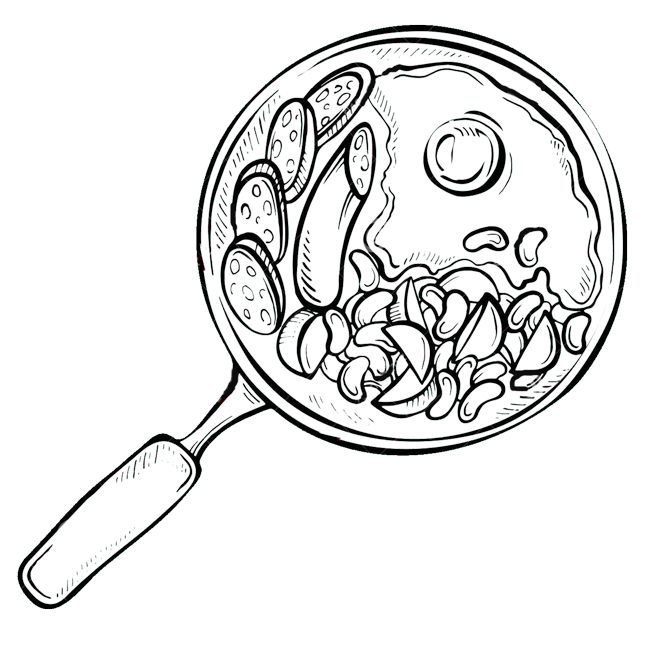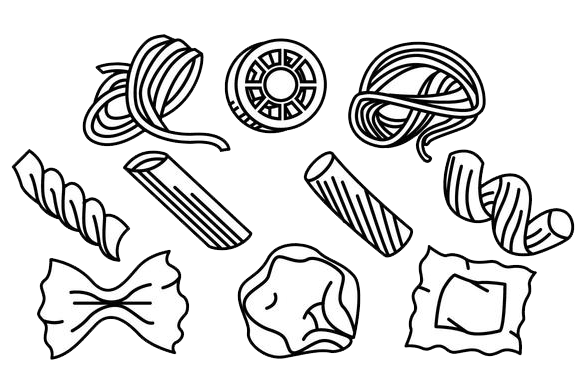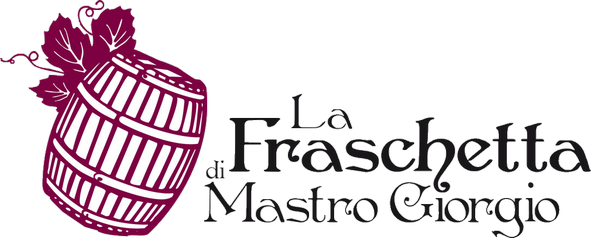Piedmont
The Italian culture of the tableThe Italian culture of the table
The calendar:
June 2022 / Lazio
July 2022 / Campania
September 2022 / Sicily and Sardinia
October 2022 / Le Marche
November and December 2022 / Umbria
January and February 2023 / Tuscany
March and April 2023 / Abruzzo
May and June 2023 / Liguria
July, August and September 2023 / Puglia
Ingredients and regional products protagonists of the month:
Special recipes of the month

to start...

Following...

Second dishes

To conclude....
To know more…
Agnolotti or Ravioli del plin
Agnolotti del plin are a traditional dish from the Langhe and Monferrato. It is a fresh pasta, generally filled with braised meat, small in size and with a specific shape.
The origins of this dish are quite uncertain; according to the most well-founded theory, it seems to have been born to recover the leftovers from the roast. In the past it was customary to serve agnolotti “al napkin”: after having cooked and drained them, they were placed inside a napkin, so that they did not lose their softness. They were then eaten without seasoning, to enhance the flavor of the filling. Only sometimes they were accompanied by a light broth, served separately in a cup, or with red wine.
The name agnolotti seems to derive from a term in the Piedmontese dialect “anulòt”, indicating a ring-shaped instrument that was used to prepare agnolotti at home. Once upon a time, in fact, this traditional egg pasta was round and only later did it take on its typical shape. It is, in fact, the characteristic closure at the origin of the name. Although each family has its own personal interpretation of the filling, the closure is never changed: the shape is rectangular and a small pinch, plin in Piedmontese dialect, is made to close the ravioli.
The truffle in Piedmont
The truffle is a typical product of the hills of southern Piedmont with an unparalleled food and wine value. It constitutes one of the most important regional economic resources; a traditional product, because it is impossible to recreate outside its natural environment, but also innovative, because today it is cultivated according to very modern technologies.
For fifteen years the Region has collaborated with the Institute for Wooden Plants and the Environment (IPLA S.p.A) for the monitoring of experimental truffle grounds, natural or derived from planting, to identify the most suitable cultivation treatments to be practiced to promote and maintain the truffle production.
Piedmont has always been an area of excellence in this field: since the Middle Ages areas such as Casale Monferrato and Tortona were reported among the best for harvesting this precious ingredient.
Fat ox
It is a majestic and imposing animal, symbol of the Piedmontese breed, today rightly considered a bovine breed of absolute excellence, known throughout the world for the unmistakable quality of its meat.
It is an adult bovine with a white coat, which is castrated within eight months of age (leaving the scrotal sac intact) to encourage the animal’s weight gain, which can well exceed one ton and which takes on the name of ox only after the four years of life.
His diet must be based on natural products, preferably administered dry: hay, corn, bran, soya, broad beans, barley are the main components of his diet, which can be enriched by a mineral and vitamin supplement.
However, there is no shortage of those who further supplement this type of diet with eggs or other products.
It is very important that the animal gains weight slowly and in a balanced way, so that it can reach its complete maturation in times that coincide with its maximum beauty.
Difficult result, which can only be achieved by the expert hands of breeders of great skill and profound competence.
The fruit of this difficult work is a meat of exceptional quality, pigmented with fat, with an intense flavor and absolute softness, unmistakable on the palate for its exquisiteness.
Carnaroli rice
(da redacademy)
Il riso Carnaroli, conosciuto anche come principe dei risi, è una delle varietà di riso più famose e utilizzate. Ha un chicco sodo e saporito, che riesce a rilasciare la giusta quantità di amido e a renderlo particolarmente indicato per i risotti. La sua tipica caratteristica è la tenuta alla cottura, che garantisce buone rese anche a chi non è esattamente un esperto di cucina.
Nasce nel 1945 sui terreni della Cascina Casello a Paullo, in provincia di Milano, dall’incrocio con la varietà di riso Vialone e Lencino. In seguito a ricerche e studi durati per anni, l’agronomo Ettore De Vecchi e il suo fedele collaboratore, riescono a selezionare il chicco che diventerà tipico della varietà Carnaroli. Oggi questo tipo di riso è prodotto soprattutto in Piemonte nella zona di Vercelli e Biella.
Il riso Carnaroli è perfetto se utilizzato per il risotto, perché contiene una buona quantità di amido, che aiuta a ottenere una grande cremosità. Il chicco, di ottima consistenza, tende a rimanere separato e ben sgranato anche dopo la cottura.
Carmagnola gray rabbit
(da fondazioneslowfood)
Come dice il nome, questa razza ha pelliccia soffice, folta, grigia. Di taglia media, con un corpo allungato e lombi muscolosi, pare discenda da un incrocio con il cincillà.
Il coniglio Grigio di Carmagnola si segnala innanzi tutto per l’ottima resa: la sua struttura ossea è molto fine e la massa muscolare superiore a quella delle altre razze. Le carni sono fini, tenere, sapide, particolarmente bianche e per niente stoppose.
È l’unica razza di coniglio piemontese di cui sia rimasta qualche traccia: molto diffusa fino alla fine degli anni Cinquanta e poi praticamente scomparsa fino al lavoro di recupero genetico realizzato dal Dipartimento di Scienze Zootecniche dell’Università di Torino e dall’Istituto Professionale per l’Agricoltura e l’Ambiente di Verzuolo.
The Castelmagno
Val Grana preserves a heritage of pastures rich in uncontaminated fodder essences and numerous varieties of endemic herbs and flowers. Its economy is linked to the artisanal production of Castelmagno, which in the Occitan language of these valleys is called castelmanh: a cow’s milk cheese with minimal additions of sheep or goat’s milk (from a minimum of 5% to a maximum of 20%).
The first information on its production dates back to the 12th century, reported in a sentence of 1277 which already imposed, for the rental of some pastures from the Marquis of Saluzzo, a payment not in money but in a certain quantity of forms of Castelmagno.
The nineteenth century was its golden age: Castelmagno became the king of Piedmontese cheeses and appeared on the menus of the most prestigious restaurants in Paris and London. Then the decline begins: with the wars and the depopulation of the mountains, Castelmagno seriously risks disappearing.
Today the Castelmagno on the market is often produced in valley dairies but there are still herdsmen who process the milk from their own cows in the mountain pastures according to the ancient technique. The mountain huts are located at altitudes above 1600 metres: here, the great variety and fragrance of the herbs and flowers, enriched by grasses, in particular poa and fescue, gives Castelmagno excellent organoleptic characteristics. A botanical research conducted by the University of Turin is studying the characteristics of the pastures and should conclude with the recognition of the best “crus”.
The Castelmagno cheesemaking technique involves breaking the curd into lumps the size of a grain of corn or at most a hazelnut. The mass obtained is left to drain for 24 hours in a cloth (the risola) which is knotted to form a bundle and hung. After about a day, another cube is broken. The mass, collected again, remains to acidify for three, four days in whey before being triturated and re-mixed with the addition of salt and then pressed into the molds for a day. Subsequently the Castelmagno is left to mature in a natural environment for at least 120 days.
The paste is ivory in color and soft: after maturation it acquires more compactness and a darker colour, sometimes with blue-greenish shades due to the development of penicillium mould, responsible for marbling.
The Bonet
Like the hat of Piedmontese farmers, worn last, the dessert made with amaretti biscuits and chocolate traditionally closes the meal
Piedmontese bonet can be traced back to a pudding at first glance but it has a completely separate recipe. You only need five ingredients to make it: milk, eggs, cocoa, amaretti biscuits and rum.
The origin of the bonet dates back to 1600, when the dessert was white and not chocolate, not yet being very widespread and above all easily accessible economically. It was born in Monferrato, so much so that this invention in a white version, very similar to a crème caramel, was called “Monferrina” dessert. It was usually served at important banquets although one of the origins of the name refers to a more popular tradition.
In Piedmontese the bonet is also the men’s cap-type hat that farmers used. Like all hats, it is the last thing you wear before going out and according to one of the explanations it is associated with dessert as it is eaten at the end of the meal.
Even today, bonet is an unmissable dessert in traditional Piedmontese menus, in homes but above all in restaurants, where it is considered a classic to always have available on the trolley. The other desserts vary, but bonet is always there when it comes to places with regional cuisine.
And speaking of molds, the other origin of the name bonet would be due, as Vittorio Sant’Albino explains in his Piedmontese/Italian dictionary of 1859, to the aluminum and copper mold in which it is cooked. It is strictly served cold to finish the true Piedmontese meal and there is a crumbled amaretti biscuit on top to sweeten it even more for the eyes and the palate.
Depending on the Piedmont area in which it is prepared, bonet can come in some variations. For example, it can smell like vanilla or lemon, thanks to the zest. It is easily available in coffee or cognac flavour. Furthermore, in the Langhe in particular, the typical Piedmontese hazelnuts, the Tonde Gentile delle Langhe, are added. Finally, we also find it paired with gianduiotto and other typical sweets such as Chivasso peanuts, which recall amaretto.
Roero Arneis White and Sparkling Wine
His name in Piedmontese dialect means “original”, “rebel”. Dominant characteristics of Roero Arneis, a dry white wine DOCG (Controlled and Guaranteed Designation of Origin) whose production is permitted only in the 19 municipalities in the province of Cuneo, along the left bank of the Tanaro river, characterized by sandy and clayey soil and a hilly landscape.
The documented history of the Arneis vine began as early as 1400, when it was cultivated in Piedmont. In 1900, due to phylloxera, a parasite that affected the vines, this vine suffered a decline. In the Seventies, however, local farmers returned to cultivating and believing in Arneis.
In recent years this wine has been experiencing moments of great excitement, as it is increasingly appreciated both in Italy and abroad for its pleasant drinkability. According to the regulations, the allowed grapes that can contribute to the production of Roero Arneis are: Arneis vine of the same name in 100% or minimum 95% purity. For improvement purposes, the addition of a maximum of 15% of younger Roero Arneis white wine to aged Roero Arneis white wine or vice versa is permitted.
Straw yellow in colour, the nose perceives the delicacy and freshness of the elegantly fruity, white flower and herbaceous notes. Fresh and dry in the mouth, with the typical bitter finish that makes it unmistakable. Its alcohol content is generally high (between 12.5 and 14% vol.) but this ensures a truly interesting fullness of taste.
The Nebbiolo
Nebbiolo is an indigenous black grape variety from Piedmont (Italy), considered valuable and suitable for high quality aging wines (D.O.C. and D.O.C.G.).
It is cultivated mainly in the hills of Langhe-Roero, then in some areas of Monferrato, Canavese, Asti and finally in the Vercellese-Novarese with the name of Spanna and in Val d’Ossola in the far north of Piedmont with the name of Prünent.
Partial cultivation is also authorized in some neighboring regions of Piedmont, such as Lombardy (in Valtellina, with the name of Chiavennasca) and in the Province of Varese (IGT Ronchi Varesini), in Valle d’Aosta (with the name of Picotener, Picotendre or Picotendro), and some areas of Sardinia (Luras.
The term seems to derive from “fog”, but it is not clear whether to define the appearance of the grape, dark, but tarnished (clouded) by abundant bloom, or whether due to the very late ripening of the grapes, which often leads to harvesting in period of autumn fogs.
Nebbiolo has its first historical mentions at the end of the thirteenth century, due to its presence in various places, primarily in Piedmont, especially in the Asti area and the Langhe: in 1431 it is mentioned in the statutes of La Morra together with Pignolo. Only since the 19th century has Nebbiolo been frequently mentioned in the works of the most famous ampelographers.
It is a vine producing grapes of the highest quality (the only possible comparison in these terms is probably that with Pinot Noir), for various aspects, but above all for the completeness of all the characteristics, in a good balance between colour, body, acidity, persistent and volatile aromas, alcoholic strength. It is therefore a grape suitable for being vinified alone or with minimal contributions, to produce wines that can be defined as “noble” with great body and duration, after adequate maturation (refinement).
By definition it is a vine suitable for aging, it is in fact very stable in aromas, which with tertiarization become increasingly complex and interesting, while the color, due to the characteristic profile of the anthocyanins, tends to rapidly evolve towards garnet.
Once matured, Nebbiolo wines have a perfume with fruity notes, dried flowers and spices. On the palate the tannin is intense although compensated by the high acidity, typical of the variety. It is normally vinified alone to bring out all its characteristics.
DOC and DOCG from Nebbiolo grapes:
In the heart of the Langhe, in particular in the Barolo and Barbaresco areas, not far from Alba, iconic wines of extraordinary elegance and longevity are produced from Nebbiolo grapes such as Barolo DOCG, Barbaresco DOCG, but also Nebbiolo d’Alba DOC and the Langhe Nebbiolo DOC.
Not far away, in the north-eastern part of Cuneo, on the sandy banks of the Tanaro river, Roero DOCG is produced, with a minimum of 95% Nebbiolo grapes.
Moving north, Nebbiolo is also cultivated with excellent results between Novara and Vercelli: here the Gattinara and Ghemme DOCG wines are born, where Nebbiolo is usually used for niche productions in blends with the Vespolina grape.
Another prominent region for the production of Nebbiolo wine is Lombardy, in the province of Sondrio. Here Nebbiolo is called Chiavennasca and is used especially for the production of Rosso di Valtellina DOC, Valtellina Superiore DOCG and Sforzato di Valtellina DOCG (called Sfursat), a passito wine of great structure and character.
Nebbiolo is also produced in small quantities in the lower Valle d’Aosta (between Donnas and Montjovet), in Umbria (in the province of Perugia, especially in Marsciano and Gubbio) and in the northern part of Sardinia, in Gallura (Nebbiolo di Luras ).
The Timorasso
Rustic and vigorous, it is a native white grape variety of the Alessandria area and in particular of the Tortona hills and in some areas of the Novi area.
It has been cultivated in the province of Alessandria since ancient times: there is evidence of it as early as the 14th century, in the Treatise on agronomy by Pietro de’ Crescenzi, and in the Ampelographic Bulletin of Di Rovasenda, of 1885[ which reported this vine as the most cultivated in the Tortona area.
The name could derive from shy and therefore fearful in the sense of gentle, docile grapes, in reference to the taste, or in the sense of slow to ripen, i.e. late, which however does not correspond to the current development of the fruit. Finally, it could be a reference to the inconstant productivity, which varies greatly depending on the year.
Given its poor adaptability to climatic conditions different from those of the region of origin, over the centuries it has been slowly abandoned in favor of more productive and less delicate red grapes such as Barbera and Croatina; after the invasion of phylloxera, the Timorasso vineyards were almost completely replaced.
In the 1980s some winemakers from the Tortona area, primarily Walter Massa, decided to bring it back to life, betting on its great potential. It is currently produced in the valleys of lower Piedmont: Val Curone, Val Grue, Valle Ossona, Val Borbera and Val Sisola.
The wine obtained is a full-bodied white wine with good structure, with very delicate fruity and floral aromas, and a straw yellow color that turns towards golden as it evolves. It lends itself well to long aging.
The production, still rather limited, makes it a niche wine.
The DOC currently is: Colli Tortonesi Timorasso, including the Terre di Libarna sub-area
The Barbera
Barbera is a typical Piedmont wine made from the native vine of the same name, although it is known to be less ancient than others grown in Piedmont, such as Moscato, Grignolino and Nebbiolo. Its expansion has been constant over the centuries and today the vine from which it is obtained is the most widespread in the region among those with red grapes, mainly in the areas of Alessandria, Alba, Asti, and the Oltrepò Pavese.
Barbera can be marketed under different denominations of controlled origin, often with particular typologies, such as Barbera di Asti, d’Alba or Canavese. The “lively” version is also typically Piedmontese, a young wine with light effervescence. Among the barbera of Alba, Asti and Monferrato we find quite important differences, due to the variation of the regional territory in relation to the different areas.
Barbera is to be drunk young in its un-aged version, the aged versions should be left to rest for a few years before tasting it. Especially in its superior versions we find that the tannins (which make it rich in gallotannic acid and therefore with a particularly sour flavour) are quite marked and consequently if drunk shortly after being bottled it reveals a certain angularity on the palate, which gradually disappears. rounding out as time passes. Some Barbera can, in the best years, reach 15°, without demonstrating a particularly strong alcohol content, as the structure of the wine itself tends to balance it, making it pleasant and easy to drink.
A very classy wine, appreciated on international tables, it also adapts very well to the preparation of some typical Piedmontese dishes, such as roast meat or risotto.
Aside from the land of choice, the Barbera vine becomes part of several other Italian wines (not just DOC): Lombardy and Emilia, for example, have DOC wines based on Barbera. But Barbera is also grown in Liguria, Valle d’Aosta and, to a lesser extent, in other Italian regions.
A robust wine full of personality, for decades Barbera has represented the classic red table wine, originally highly appreciated by Piedmontese consumers, then by those of Lombardy, and now in much of Italy, especially in the north.
It has three DOCGs, Nizza, Barbera d’Asti and Barbera del Monferrato Superiore, and numerous DOCs. Starting from the year 2000, two sub-areas (crus) were inserted which delimit the most qualitatively important areas of Barbera d’Asti: Tinella and Colli Astiani.
Barbera is a wine generally appreciated for its acidity, rather than for its tannins
DOCG Wines
- Barbera d’Asti
- Barbera del Monferrato superiore
- Nizza
DOC Wine
- Barbera d’Alba
- Barbera del Monferrato
- Pinerolese Barbera
- Canavese Barbera
- Colli tortonesi Barbera
- Collina Torinese Barbera
